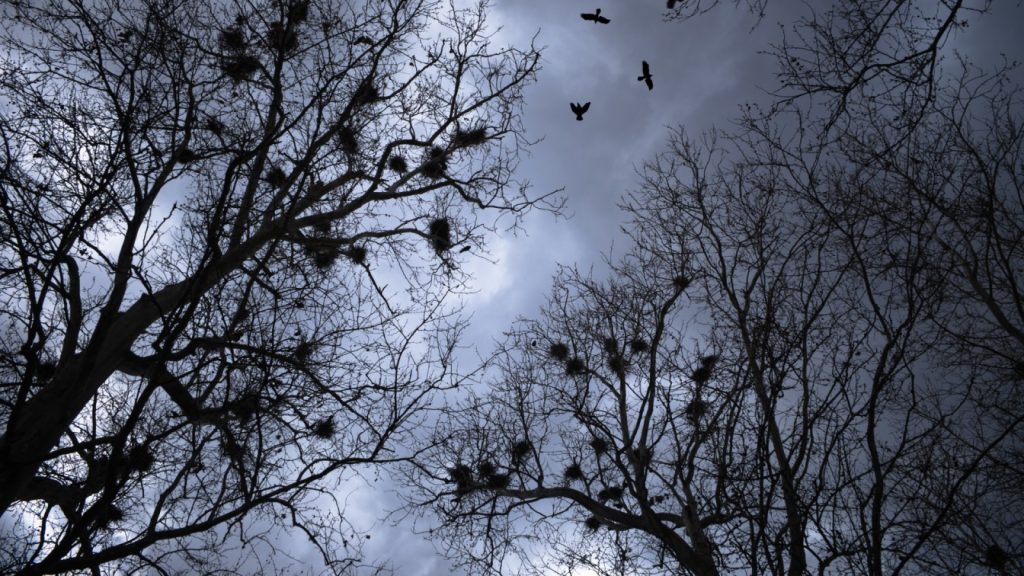Our imaginations are filled with scary tales of ghosts, haunted houses, and eerie woodlands as
Halloween creeps near. Although we typically associate this night with witches, ghosts, and
skeletons, the natural world, particularly trees, has its own mysteries. Trees that stand tall in
shadowy forests have seen many generations pass, silently guarding old secrets, folklore, and
occasionally odd occurrences. Let’s delve into the reasons why trees have come to represent
the otherworldly in folklore.

Why Are Trees So Spooky?
Across many cultures, trees have long been associated with life, death, and the cycles of
natural rebirth. However, the way they vary with the seasons also adds a spooky element,
particularly in the autumn when their leaves are stripped away, revealing gnarled, bare
branches that reach the sky. These skeletal shapes make the ideal backdrop for ghost stories,
especially when accompanied by a misty evening or the illumination of a full moon.
Trees are frequently associated with curses, spirits, and even portals to other worlds in folklore.
Because of their longevity and the way their roots wind into cemeteries and historic locations,
some species—such as willows, yews, and oaks—have long been connected to death and the
paranormal. Their portrayal as “haunted” characters in fiction and film—such as the Whomping
Willow from Harry Potter or the frightful trees in The Wizard of Oz—only serves to strengthen
their standing as nature’s guardians of the unknown.

The Science of Spooky Trees
Trees can appear frightening for scientific reasons, so it’s not just a myth. For instance, a
banyan’s elongated roots can produce twisted branches and dark caves that appear eerie,
particularly at night. Because of their thick and uneven branches, tamarind trees inherently
convey a spooky atmosphere. Their spine-chilling effect is only enhanced by the odd sound of
creatures rustling in these forests. Pareidolia, a phenomenon in which our minds generate
recognizable shapes in arbitrary patterns, is the cause of the perception of faces or figures in
trees. This gives trees a haunting, almost living appearance.

Eerie or Endearing, Trees Keep Us Spellbound!
While haunted trees are fascinating, the reality is that these ancient giants are becoming
increasingly rare. Urbanisation, deforestation, and environmental degradation pose dangers to a
variety of trees in India, including banyans and peepals. A potent method to respect India’s
ecological and cultural past and re-establish a connection with nature is to plant trees. Each tree
planted contributes to the creation of a more sustainable and greener future. Since trees absorb
carbon, offer shelter, and promote biodiversity, planting a tree is akin to welcoming good vibes
into our life. They therefore provide us with healthier ecosystems, colder temperatures, and
cleaner air.
Embrace the Mystery of Trees This Halloween
Grow-Trees.com provides these enchanted trees with a future through initiatives like
afforestation and reforestation, enabling future generations to witness their presence and sense
the enduring connection to India’s natural and cultural legacy. In addition to restoring
ecosystems, planting trees guarantees that these natural wonders and myths from the past will
continue to be a part of our landscape for generations to come.
For generations, trees have remained, absorbing the mysteries of their surroundings and
bearing witness to innumerable legends. Remember the eerie beauty of India’s trees—the quiet
giants that protect our lands, bearing the weight of history, culture, and spirit inside their
branches.
India’s trees are living legends, whether they are “haunted” or just beautiful, and each new
sapling that is planted helps to preserve their enchantment. Plant a tree this Halloween to bring
a little enchantment and mystery back into the world. Happy Halloween!